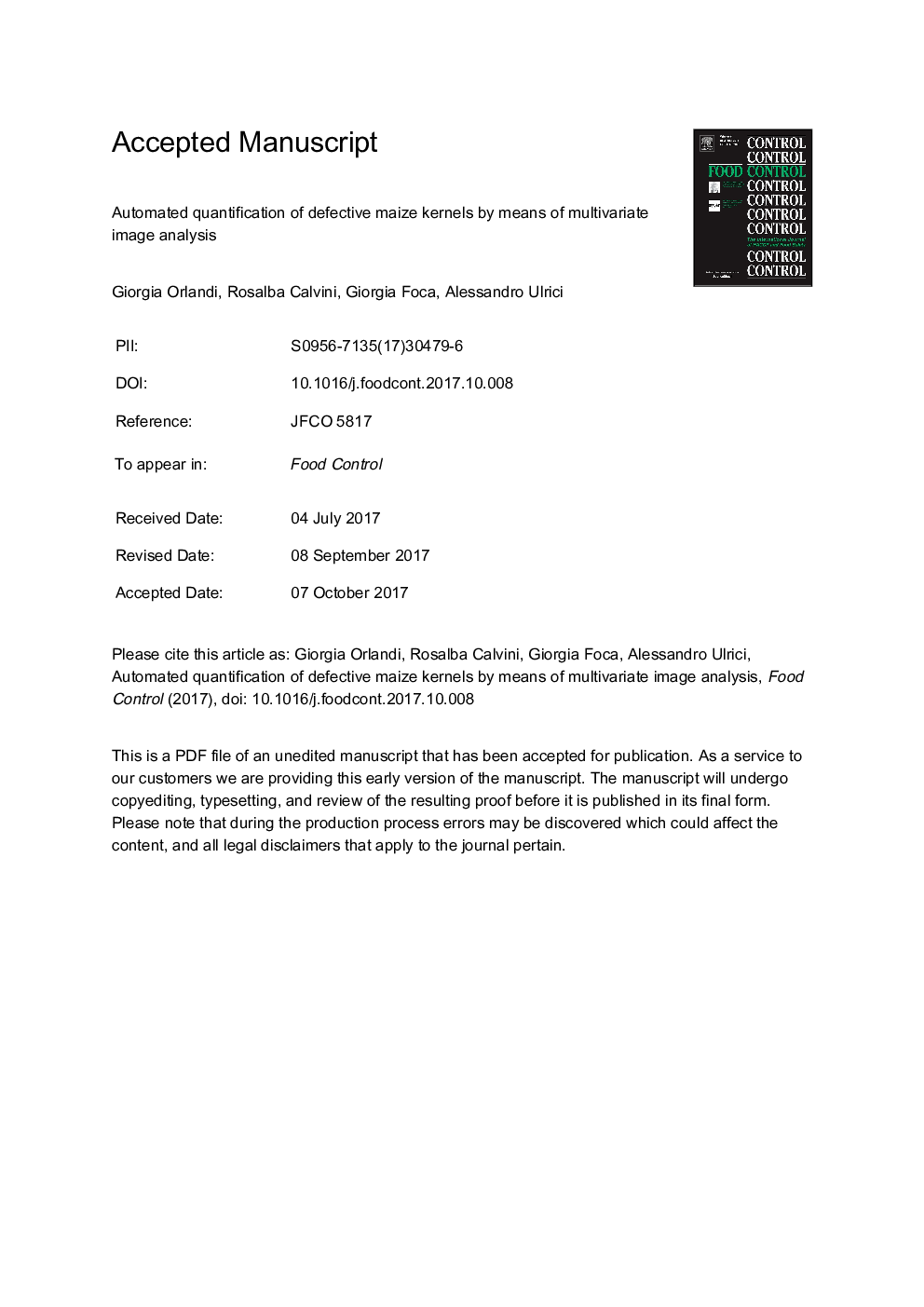| Article ID | Journal | Published Year | Pages | File Type |
|---|---|---|---|---|
| 8888219 | Food Control | 2018 | 35 Pages |
Abstract
This article describes the development of a fast and inexpensive method based on digital image analysis for the automated quantification of the percentage of defective maize (%DM). Defective kernels tend to foster high levels of mycotoxins like Deoxynivalenol (DON), which represents a risk for the health of humans and of farm animals. In this work, 332 RGB images of 83 mixtures containing different amounts of defective maize kernels were acquired using a digital camera. The mixtures were also analysed with a commercial ELISA test kit to determine their concentration of DON, that resulted highly correlated with the amount of defective kernels. Each image was then converted into a signal, named colourgram, which codifies its colour-related information content. The colourgrams were firstly explored using Principal Component Analysis. Then, calibration models of the %DM values were developed using Partial Least Squares (PLS) and interval PLS. The best interval PLS model allowed to predict the %DM values of external test set samples with a root mean square error value equal to 2.6%. Based on the output of this model it was also possible to highlight the defective-maize areas within the images, confirming the significance of the proposed approach.
Related Topics
Life Sciences
Agricultural and Biological Sciences
Food Science
Authors
Giorgia Orlandi, Rosalba Calvini, Giorgia Foca, Alessandro Ulrici,
